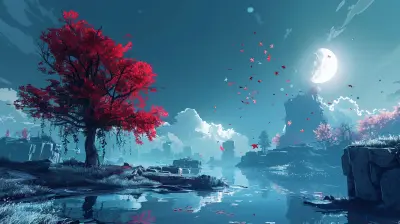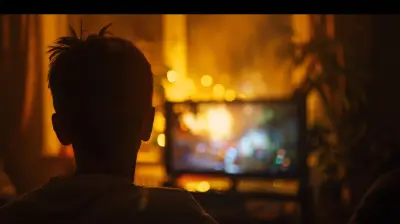Open World Discoveries That Made Exploration Rewarding
20 August 2025
There’s something magical about setting foot into a vast open world, isn't there? You boot up a game, the title screen fades, and suddenly—boom—you’re dropped into a land teeming with possibility. Where do you go first? That glowing mountain in the distance? The shadowy forest to your right? The crumbling ruins just past the meandering stream?
We’ve all had those moments: stumbling upon a hidden cave packed with treasures, finding a quirky NPC with a story that tugs your heartstrings, or simply soaking in the view from a towering cliff. These are the open world discoveries that make exploration truly rewarding. And today, we're diving deep into why these moments strike such a chord with gamers like you and me.
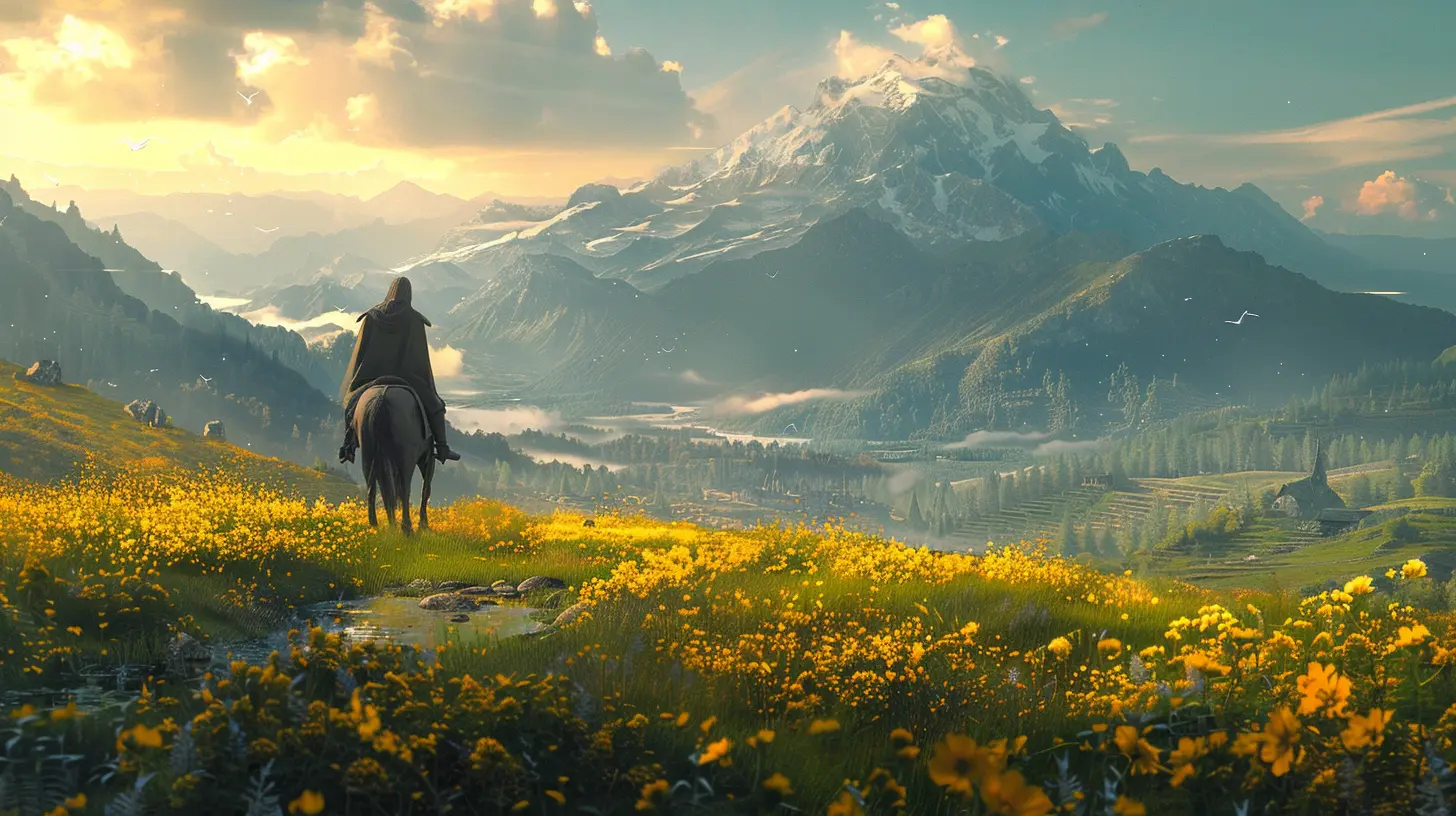
The Allure of the Unknown
If games are stories, then open worlds are the canvases. Unlike linear paths where every beat is scripted, open world games invite you to write your own tale—one discovery at a time. It’s curiosity that drives us. The best games don’t handhold; they whisper, “Go ahead, see what’s out there.”And when the world reacts to your curiosity? That’s the magic touch. You learn, not through tutorials, but through journeying. It’s immersive, personal, and unforgettable.
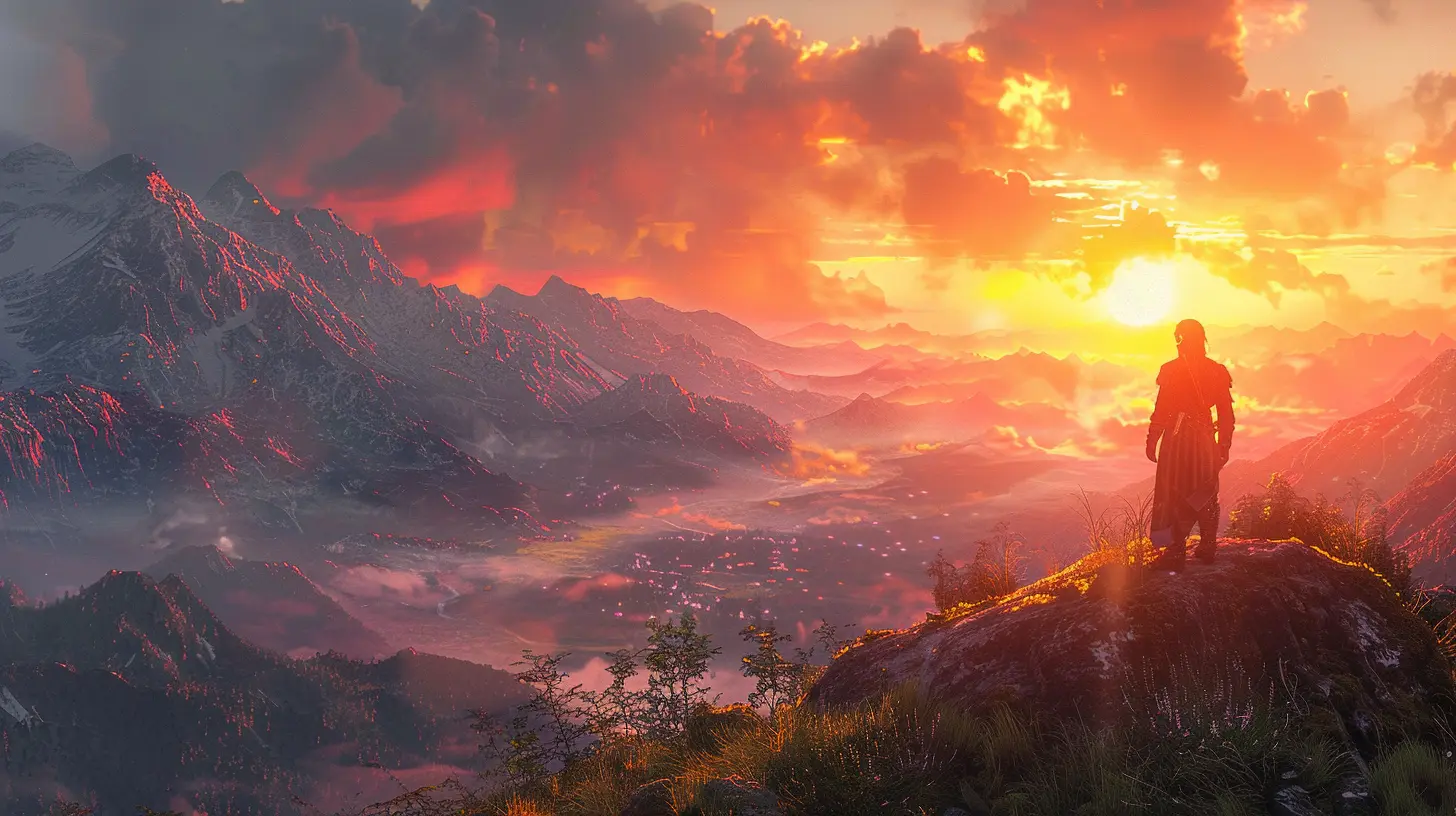
Hidden Treasures and Forgotten Lore
Remember the first time you cracked open The Elder Scrolls V: Skyrim and wandered off the beaten path? One minute you’re chasing butterflies; the next, you're knee-deep in a dungeon no quest ever pointed you toward. Inside? Echoes of long-dead kings, dusty tomes, and loot you weren’t sure you deserved.These organic discoveries matter. They reward your eyes for catching that barely visible cave entrance. They thank your intuition for thinking, “Maybe I can climb that ridge.” In return, the world feels alive—like it’s hiding secrets just for you.
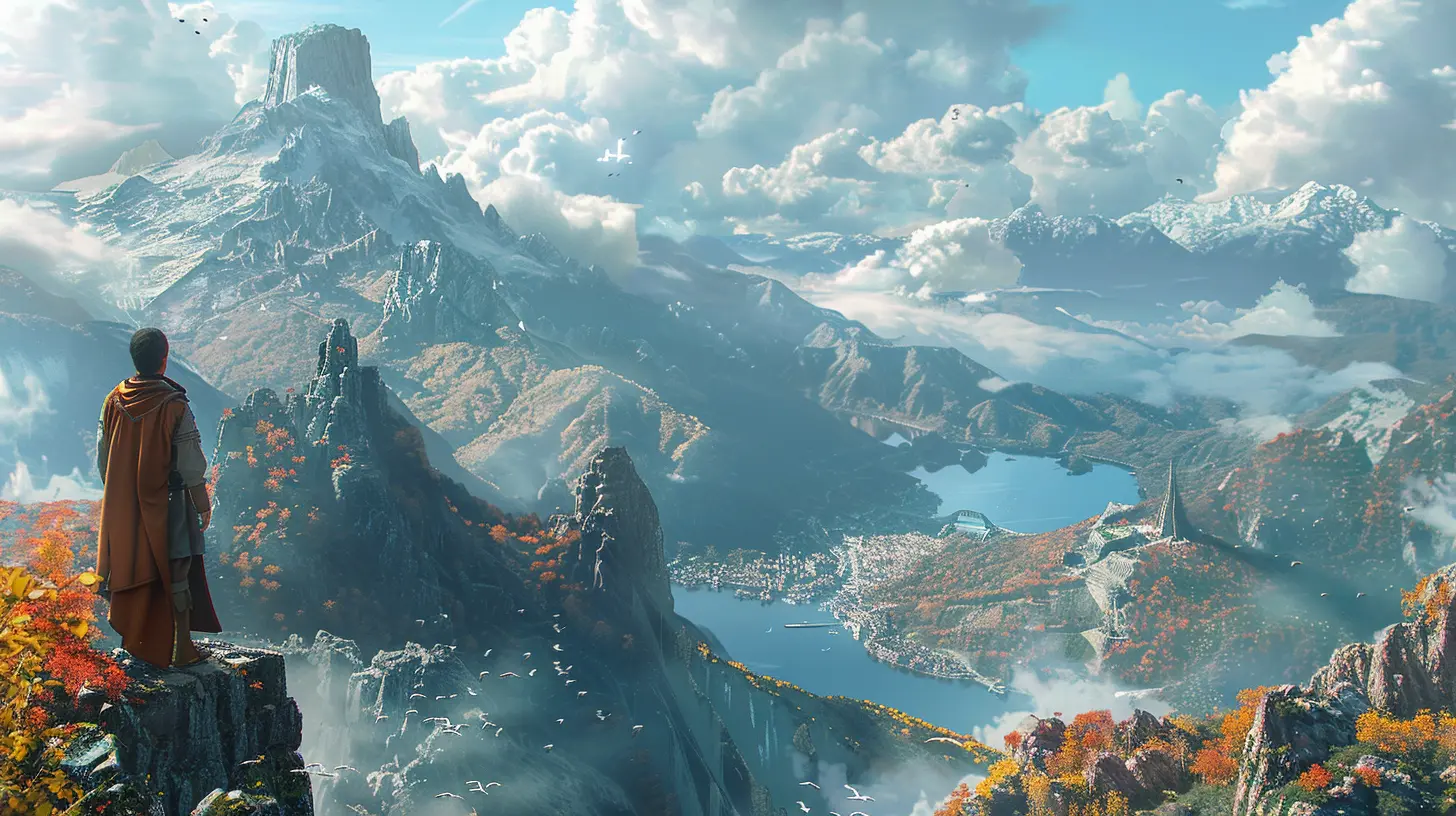
Real Stories Hidden in Plain Sight
It’s wild how some of the best storytelling doesn’t happen in cutscenes but in the world itself. Think of Red Dead Redemption 2. You’re trotting along, just minding your business, when you spot a half-collapsed cabin tucked into a glade. Inside? A bone-chilling scene, maybe a diary on the table, maybe a long-forgotten duel's aftermath.No quest marker. No exclamation points. Just a story waiting to be noticed.
This kind of environmental storytelling makes exploration feel meaningful. It turns you into a detective of the past, piecing together tales left behind. It’s not just about loot; it’s about understanding the world you inhabit.

Dynamic Events That Surprise You
One of the coolest things about open worlds? When they surprise you with spontaneous, unscripted moments. Games like The Legend of Zelda: Breath of the Wild do this beautifully. You might be climbing a mountain when lightning starts striking your metal equipment. Or you’re cooking mushrooms and boom—accidentally create a new meal with wild stats.These dynamic systems reward curiosity and experimentation. It's the kind of design that makes players smile because they feel like the world acknowledges their presence.
Have you ever run into a traveling bard who sings about your previous exploits? That’s not just good AI—that’s a pat on the back for being an explorer.
Wildlife and Ecosystems That React
Ever felt like the wildlife in a game knew more than the NPCs? In Horizon Zero Dawn, the robotic creatures are more than just enemies—they’re part of a living ecosystem. Watching them gather, graze, or react to threats feels like watching a nature documentary from an alternate reality.When the world reacts to itself without your interference, it pulls you in. You’re not the center of the universe; you’re a part of it. And that makes everything you find feel so much more special.
Unique Biomes and Breathtaking Views
Sometimes, discovery isn't about loot or XP. Sometimes, it’s about beauty. Think of Ghost of Tsushima. That moment you crest a hill and see a field of red maple leaves dancing in the wind? Or a sun-drenched coast with waves crashing rhythmically?These visuals are rewards in themselves. They’re emotional checkpoints. Places that make you stop, take a screenshot, and just breathe.
Open worlds that give you varied biomes—snowy peaks, lush forests, scorched deserts—don’t just look pretty. They provide contrast, rhythm, and a constant reason to keep moving. You never know what visual treat awaits you just beyond the horizon.
Quirky NPCs and Unexpected Encounters
Let’s talk about the personalities peppered throughout open worlds. You know the ones—those oddball characters who stick with you long after the game ends.In The Witcher 3, you might stumble upon a possessed pig, a ghostly wedding, or a doppler just trying to live a normal life. These side stories are often more memorable than the main quest. Why? Because you found them. They weren’t shoved in your face. They felt like secrets made just for your playthrough.
These NPCs make the world feel lived-in. Like real people go about their lives regardless of your heroics.
Audio Clues and Visual Cues
Subtlety goes a long way. Great open world games use sound and sight to guide you. Hear a strange chime? Maybe there’s a Korok nearby in Breath of the Wild. Spot a trail of smoke in the distance? Might be a traveling merchant or something more sinister.This kind of design doesn’t break immersion. It deepens it. You’re not following glowing arrows—you’re an adventurer using instincts honed over hours of play.
Puzzles That Aren’t Just Busywork
We've all played games where puzzles feel like chores. But the best open world discoveries include puzzles that are clever, context-driven, and satisfying.Take Immortals Fenyx Rising—layers of mythological logic govern the world. You see a strange altar and think, “This means something.” You piece together clues, follow the terrain, test an idea—and boom. A treasure chest, a new ability, or just that warm fuzzy feeling of "I figured that out!"
It’s not about being hard. It’s about being fair and rewarding for those who pay attention.
The Joy of Going Off-Track
What's wild is that some of the most rewarding open world moments happen when you actively avoid the main quest. It’s like driving off-road to find a hidden lake or a scenic overlook in real life. You get a feel for the soul of the game—its tone, its secrets, its quiet places.And sure, the developers might’ve placed those secrets there, hoping a few players would notice. But when you find them? It feels like destiny.
Light RPG Elements That Let You Shape the Experience
Not every open world needs to be Skyrim-level deep with stats and skills. Sometimes, just giving players a bit of choice—how to climb, what to craft, which faction to aid—can turn simple exploration into a personal journey.Games like Subnautica prove that even without traditional combat, open world exploration thrives when you tie discoveries to survival, customization, or narrative progression.
Discovery That Changes the World
The most powerful explorations aren’t just cosmetic—they ripple through the world. Maybe you uncover a long-lost language that helps you talk to an ancient race. Or you find a cure for a town plagued by disease.These discoveries make the world dynamic. You're not just sightseeing. You’re influencing, healing, or reshaping the environment in meaningful ways.
Fast Travel Done Right
Now, let’s talk fast travel. Weird topic for exploration, right? But fast travel can make or break an open world. Bad fast travel? Makes you skip half the wonders. Great fast travel? Lets you balance curiosity with convenience.The trick is this: games that unlock fast travel only after you discover key locations encourage genuine exploration early on. By the time you’re zipping from tower to village, you’ve earned it.
Musical Rewards and Soundscapes
We don’t talk about this enough—music is a form of discovery too. Whether it’s a haunting guitar riff that plays when you enter a forbidden zone or the melodic swell when you breach a cloudline in a flying mount, audio fuels emotion.Games like Journey and Shadow of the Colossus turn open spaces into symphonies. And when music shifts based on discovery? It’s like the world is singing back to you.
Why Do These Discoveries Matter?
Let’s be real—life can be tiring. We wake up, clock in, follow routines. But when you drift into a vivid open world and discover something unexpected? It's like your brain gets sunshine. You remember that childlike sense of wonder.Exploration in games is kind of like dreaming with your eyes open. It brings back the thrill of asking, “What if?”
And let’s not forget: these moments stick with us. They’re the ones we tell our friends about. We swap stories like adventurers round a campfire. “Did you find the secret dragon in the cliffside cavern?” “Nah—but I did find a talking pumpkin who challenged me to a riddle duel.”
The Future of Open World Discoveries
As technology grows, so does potential. Procedural generation, AI-driven storytelling, and reactive ecosystems are pushing boundaries. But the heart of rewarding exploration won’t change.It’s not about the size of the map—it’s about what lives in it. The whispers in the wind, the stories in the stone, the laughter hiding in the leaves.
If developers keep planting surprises, and players keep searching, the magic will never fade.
Final Thoughts
So, what made open world discoveries so rewarding? It’s not just what you find—it’s how you find it. The spontaneity, the personal touch, and the feeling that the world was holding its breath, waiting for you to stumble upon its secrets.Remember: the best kinds of experiences don’t come from following waypoints. They come from walking into the unknown.
Now go on. Lace up those digital boots. There’s still so much out there.
all images in this post were generated using AI tools
Category:
Best Gaming MomentsAuthor:

Aurora Sharpe
Discussion
rate this article
1 comments
Solenne McNab
Great article! I appreciate how you highlighted the significance of rewarding exploration in open-world games. It truly enhances the gaming experience and adds depth to the worlds we love to explore. Keep up the excellent work!
September 7, 2025 at 2:46 PM

Aurora Sharpe
Thank you so much for your kind words! I'm glad you enjoyed the article and found the exploration aspect impactful. Happy gaming!

